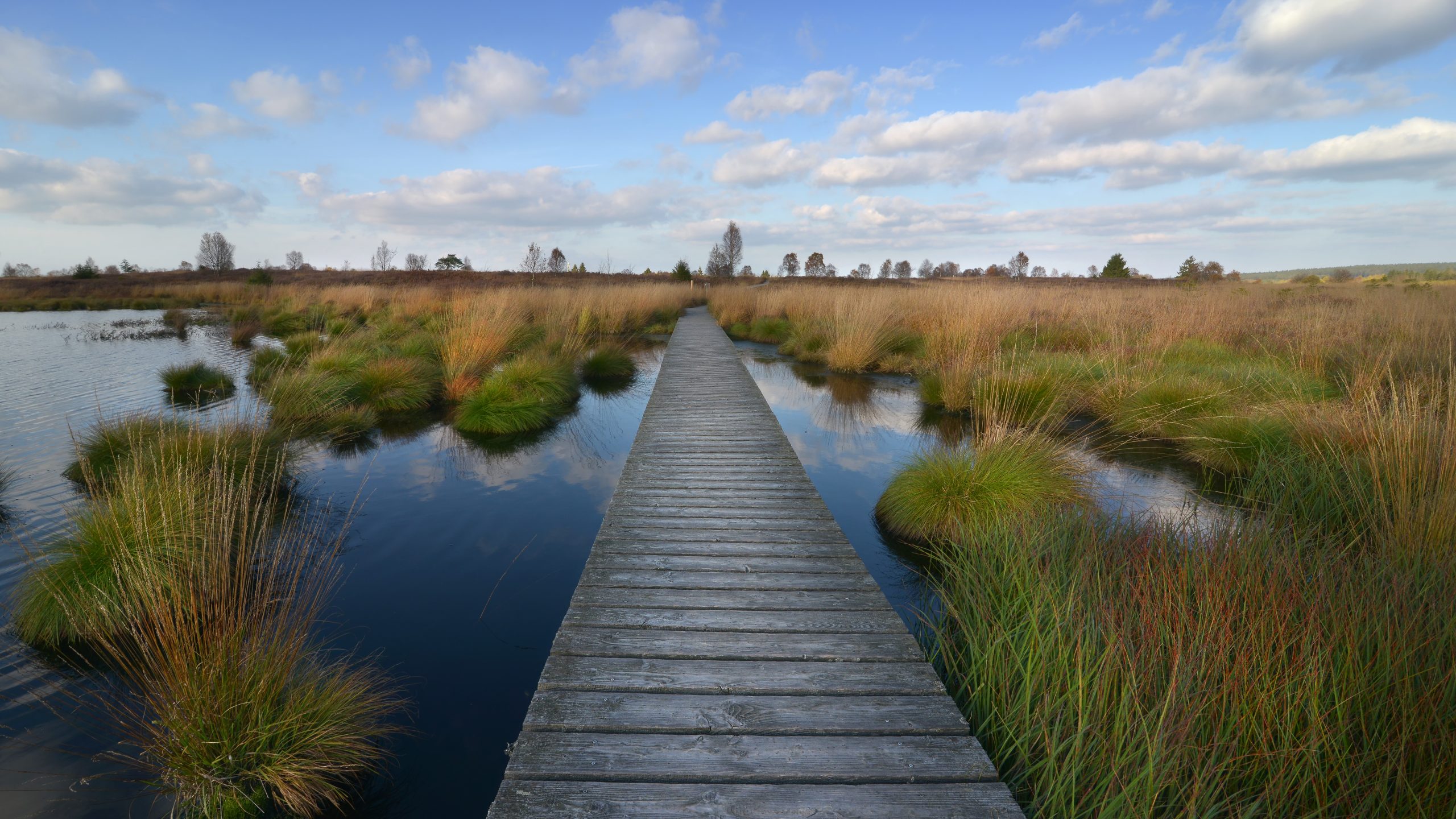Peatlands are terrestrial wetland ecosystems in which waterlogged conditions prevent plant material from fully decomposing. Consequently, the production of organic matter exceeds its decomposition, which results in a net accumulation of peat. In cool climates, peatland vegetation is mostly made up of Sphagnum mosses, sedges and shrubs and are the primary builder of peat, whereas in warmer climates graminoids and woody vegetation provide most of the organic matter.

Peatlands occur in every climatic zone and continent and cover 4.23 million km2, which corresponds to 2.84% of the Earth’s terrestrial surface (Xu et al. 2018)). Peatlands include landscapes that are still actively accumulating peat (mires), others that are no longer accumulating and do not support the principal peat forming plants (e.g. Sphagnum sp.), and peatlands used for economic uses such as agriculture, forestry and excavation for energy & heat generation, horticulture and a other uses. About 84% of the world’s peatlands are considered to be in natural, or near-natural state. Drained peatlands make up about 16% of the world’s peatlands, or 0.5% of the Earth’s terrestrial surface. Due to the process of peat accumulation, peatlands are carbon rich ecosystems that store and sequester more carbon than any other type of terrestrial ecosystem, exceeding thereby even the global above-ground carbon stock of forest ecosystems. When peatlands are drained, the carbon from organic matter contained in peat dries and oxidizes gradually to CO2, and is permanently lost from the system. Over time, this process also results in soil compaction and subsidence, making it difficult to restore proper hydrology without water table management.
Northern and temperate peatlands
The majority of the world’s peatlands occur in boreal and temperate parts of the Northern Hemisphere, especially, Europe, North America and Russia where they have formed under high precipitation-low temperature climatic regimes.
Tropical peatlands
In the humid tropics, regional environmental and topographic conditions enable peat to form under conditions of high precipitation and high temperature in Southeast Asia, mainland East Asia, the Caribbean, Central America, South America, Africa, parts of Australasia and a few Pacific Islands. Most tropical peatlands are located at low altitudes where rain forest vegetation grows on a thick layer of organic matter although some are found in upland or mountainous areas where peat can exceed 30 m. Tropical peatlands may also form under mangrove forests. The largest area of tropical peatland is in Southeast Asia.
Wetland
Wetland is a landscape experiencing high amounts of water at the surface, either permanently or for considerable periods in the year. Waterlogging can be by fresh or saline water and in extreme cases the surface can be inundated. Wetlands are dynamic systems, which form part of the hydroseral continuum from open water to dry land a process that takes place over thousands of years and all stages of which may not be evident in every location. Mires and peatlands are specific types of interrelated wetland with the unique potential to accumulate dead organic matter as peat, often to considerable thickness.
The Ramsar Convention on Wetlands (Article 1.1) adopts a broad approach to wetlands considering them to be ‘areas of marsh, fen, peatland or water, whether natural or artificial, permanent or temporary, with water that is static or flowing, fresh, brackish or salt, including areas of marine waters the depth of which at low tide does not exceed 6 metres’. Also included are wetlands that have been impacted or made as a result of human activity and those restored as nearly as possible to their former natural or an alternative condition.
Wetlands occur in all climatic zones from tropics to tundra and on every continent, except Antarctica. The global area of wetlands and the carbon they contain are subject to considerable debate and reliable data are difficult to obtain or distinguish from peatlands. The global area of wetland ranges from 280 to 398 million hectares , 1993) while an assessment for the Ramsar Convention suggests it is in the region of 5.7 million km2, equivalent to 6% of the Earth’s land surface.
Further reading
Craft, C., 2016. Creating and Restoring Wetlands: From Theory to Practice. Elsevier.
Joosten, H. & Clarke, D. 2002: Wise Use of Mires and Peatlands: Background and principles including a framework for decision making. IMCG/IPS
